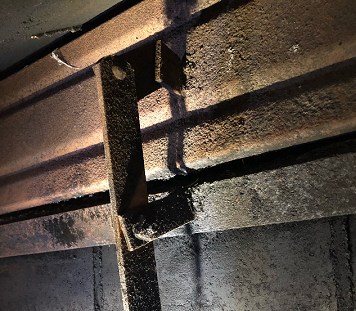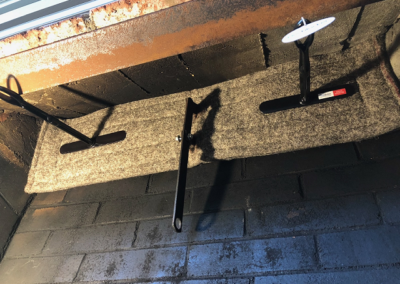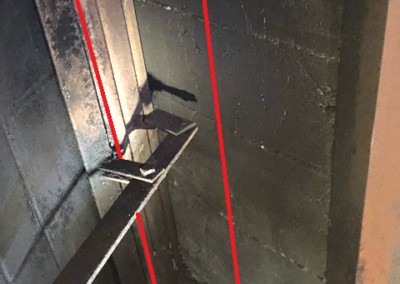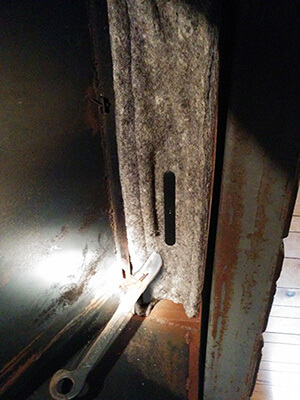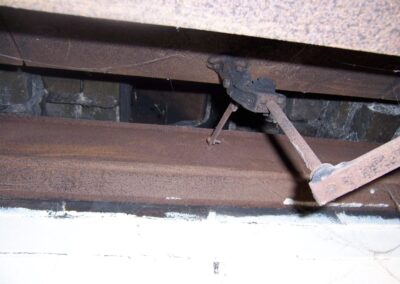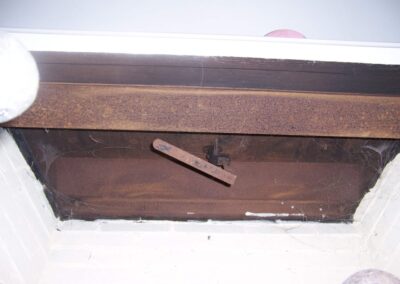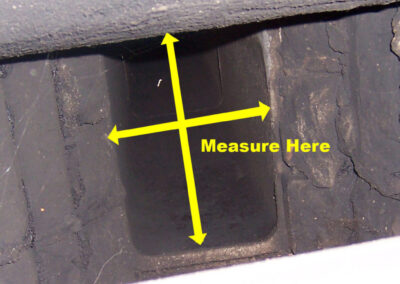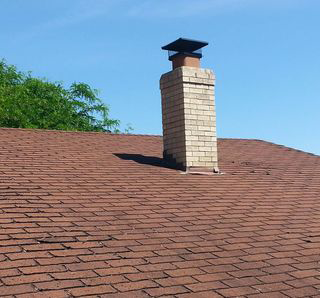
by blogediter | Jan 22, 2018 | Chimney Problems
Q: Hi Jason,
I am a South Florida resident with a Chimney in my home. Does a Chimney Balloon or Flueblocker help at all in reducing warm & humid air from entering the home? And for that matter, do they limit escape of cold air from the home? Thanks in advance for your assistance – MB
A: Hi MB,
Yes, the Chimney Balloon and the Flueblocker both help quite a bit from stopping hot and humid air infiltration. In the summer your AC, clothes dryer, bathroom vent fan, etc…can cause a reverse draft through the Chimney. This causes the fireplace to siphon super-hot air from your roof area down the Chimney into the house. If you have a wood burning fireplace this reverse draft will often manifest itself by a slightly smoky smell near the fireplace when you start to use your AC, clothes dryer, etc… Installing a Chimney Balloon or Flueblocker seals off the flue, so the Chimney cannot snorkel the hot air down into your home.
Cold A/C air, on the other hand, tends to stay low and doesn’t fly up the Chimney. So you will find your energy savings comes from keeping the hot air out. – Jason
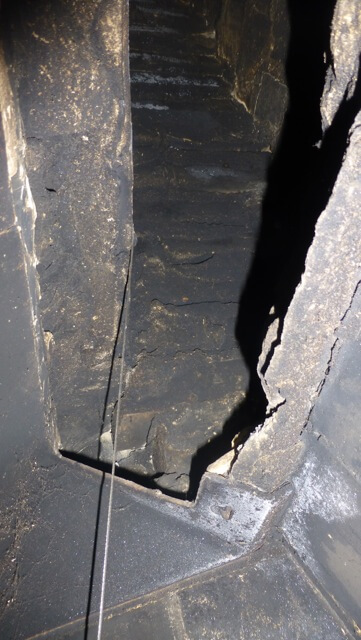
by Jason Raddenbach | Aug 28, 2017 | Chimney Problems
Some fireplaces have sharp edges
Q: Jason, Your customer service has been top notch, but I’m still not having good luck with the Chimney Balloon. I purchased one a year or two ago. Over time I noticed it had become deflated. I’ve not blown it back up a number of times in the past week. It must have a leak somewhere as it will not stay inflated. Do the valves develop leaks?
Anyway, I’m just a bit frustrated and wishing this worked better than it does. I’m not sure there’s anything to be done about it, but I needed to vent (no pun intended). – SR
A: Dear SR,
There are some applications that are just not hospitable to the Chimney Balloon. I’m afraid this may be one of those applications.
However, we have two products that are quite a bit more durable than the Chimney Balloon:
The Flueblocker is a dense wool pad with a rigid air barrier sewn inside it. Judging by your photos and the Chimney Balloon size you purchased before, my bet would be on the 13×35 Flueblocker. The length will be perfect, but you might have to trim a bit off the depth. I would try fitting it full sized first to see if it is a pressure fit, and then trim down from there if needed. Just like a haircut, you can always take more off, but you can’t glue it back on.
Another option is a Chimella. That would deploy up into your smoke chamber or flue tile. The Large Chimney Umbrella would cover either.
If you are having a hard time deciding on what one to go with, use our product selector tool to go step by step through your application. Or just give us a call.
– Jason
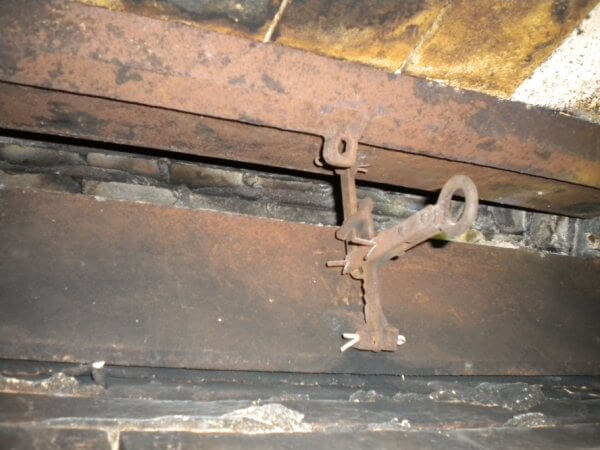
by blogediter | Aug 25, 2017 | Fireplaces
#25: I Have a Multi-Hinge Damper, How Do Plug the Flue?
25-1 Open Multi-Hinge Damper
25-2 Closed Multi Hinge Damper
Fireplace #25: Multi-Hinge Damper
These Multi Hinge Dampers are not very common. They are sturdy, but also really over-engineered and not easy to disassemble. Here are the characteristics of this damper:
- You swing the center damper handle that hangs down into the firebox from front to back to open and close the damper door.
- There are numerous cotter pins operating hinges that actuate the damper.
- There is a long rectangular damper frame and matching damper door.
- Multi- Hinge dampers actuate almost identically to Vestal Dampers, except they have a more complicated actuator.
Because of the hardware below the damper, there are two ways to plug this flue.
If you want to plug it and forget it, use the Flueblocker
If you don’t use your fireplace very much and you just want a way to plug the flue for a long duration, go with a Flueblocker. Here is a video on how the Flueblocker works. Remove the cotter pin that holds the damper door to the damper handle (image 25-2 see red arrow). Measure the length and width of the damper door, and buy a Flueblocker that is slightly larger that that size. You will likely need a 8×32 or 9×45 Flueblocker.
You will need to thread the wool pad of the Flueblocker between the detached damper handle, and the damper door. It is a tight fit, but the wool pad will effectively cover the closed damper door.
What about the Chimney Balloon?
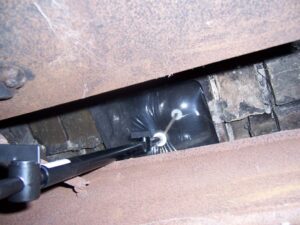 If you are lucky enough to have a low flue tile like this photo, you can use a Chimney Balloon to plug the flue tile. You would need to get a measurement of the length and width of the flue tile first (image 25-3), so you will know what size Chimney Balloon to use. Flue tiles generally take a 12×12, 15×15 or 24×12. Also purchase a HEK handle extender to give the handle some extra length to reach the flue tile. The Chimney Balloon will require a top-off of air each 6 to 12 months, and it is not quite as durable as the other two options above. So consider it a “Plan B” for this application.
If you are lucky enough to have a low flue tile like this photo, you can use a Chimney Balloon to plug the flue tile. You would need to get a measurement of the length and width of the flue tile first (image 25-3), so you will know what size Chimney Balloon to use. Flue tiles generally take a 12×12, 15×15 or 24×12. Also purchase a HEK handle extender to give the handle some extra length to reach the flue tile. The Chimney Balloon will require a top-off of air each 6 to 12 months, and it is not quite as durable as the other two options above. So consider it a “Plan B” for this application.
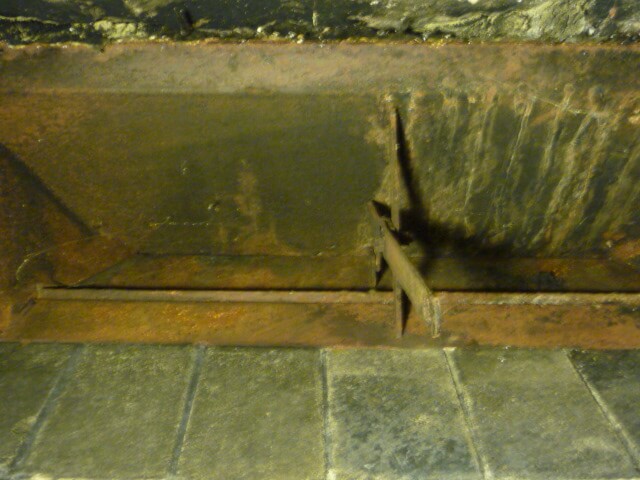
by blogediter | Aug 25, 2017 | Fireplaces
#24: I Have a Center Swing Handle Damper, How do I Plug the Flue.
24-1 Hardware for center swing handle damper
24-2 Center Swing Handle damper with Flueblocker installed
24-3 Measure area in red for a Flueblocker
24-4 Flueblocker cut for damper handle
Fireplace #24: Swing Handle Damper and High Flue Tile
These Swing Handle Dampers are very common in masonry fireplaces of solid brick or stone. These are their characteristics:
- They have a long rectangular sheet iron damper frame and matching door.
- The door has a straight cast iron handle sticking down. (image 24-1)
- The handle swings forward and back.
- All of the hardware is welded or bolted and is not removable.
- The damper door is at a slight angle when closed.
If you want to plug it tight, use the Flueblocker
If you have the swing handle damper that has a handle in the center of the damper (image 24-3) or with the handle on the side (image 24-4), you can use a Flueblocker. It seals and insulates very well. Measure the peaked area below the closed damper. (marked in red in image 24-3). Order a Flueblocker that is slightly large for the measured size. When you install the Flueblocker, cut a small slit for the straight damper handle to come through. (image 24-2 and image 24-4)
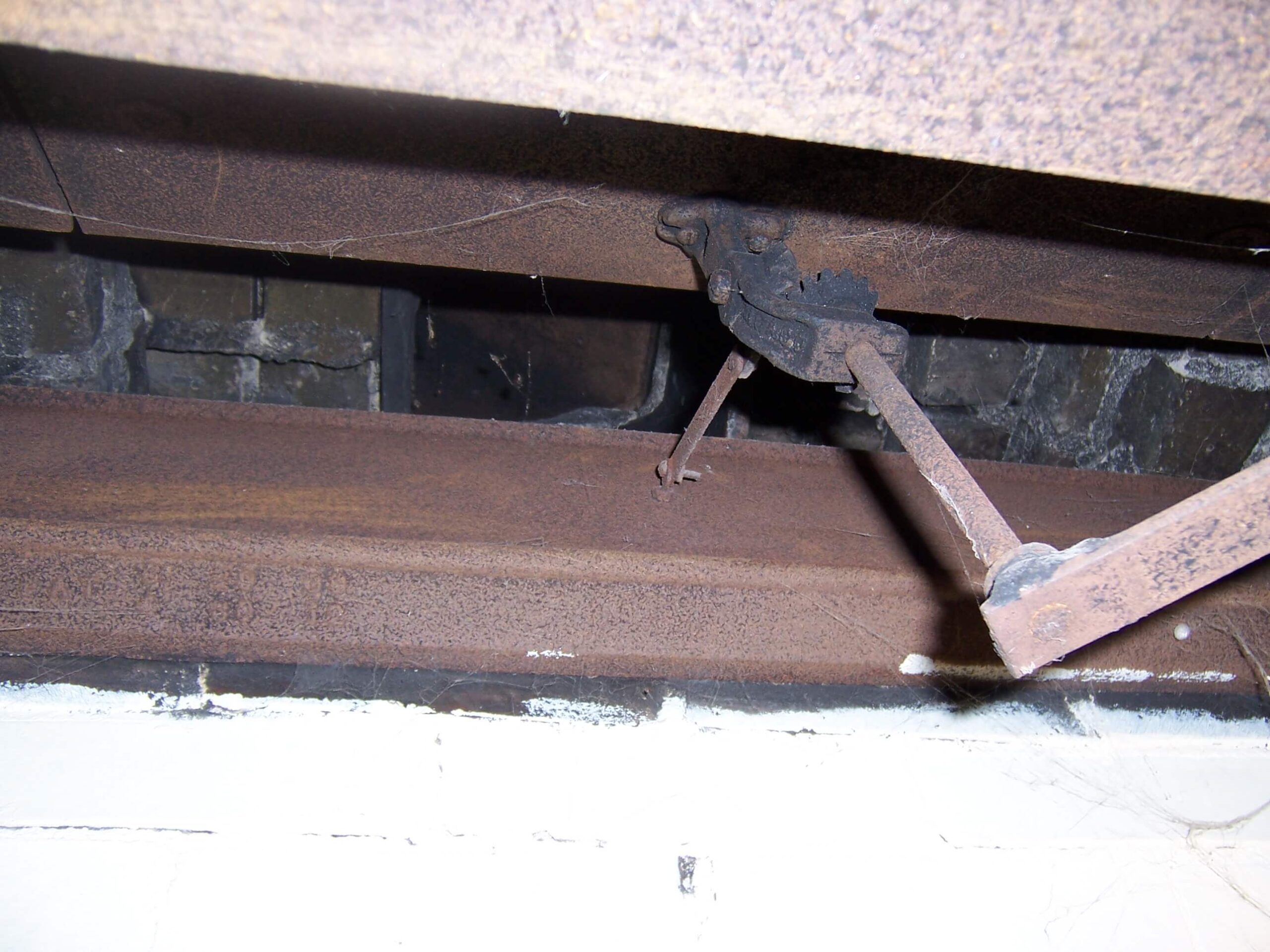
by blogediter | Aug 25, 2017 | Fireplaces
#22: I Have a Bevel Gear Damper, How Do I Plug the Flue?
22-1 Open Bevel Gear Damper with Low Flue Tile
22-2 Closed Bevel Gear Damper
Fireplace #22: Bevel Gear Damper
These Bevel Gear Dampers are not very common. The gearing and shafts often break or get corroded. Parts are hard to come by. Here are the characteristics of this damper:
- You swing the horizontal damper handle that hangs down into the firebox from left to right to open and close the damper door.
- There is non-removable gearing and shafts that actuate the damper.
- There is a long rectangular damper frame and matching damper door.
- Bevel Gear Dampers operate almost identically to Vestal Dampers , except they have a different opening and closing mechanism.
Because of the gearing and shafts below the damper, there is no way to install any draft stopper chimney plug below the damper. In this particular application you can see through the damper opening. The flue tile comes down to just inches vertically above the damper (image 22-1). This allows you to touch the flue tile by hand. That makes the flue tile an ideal location to plug.
If you want to plug it and forget it, use the Flueblocker
Here is a video on how the Flueblocker works. You will need to take a quick measurement of the flue tile with a ruler (Image 22-3). Then buy a Flueblocker that size, or a little large for the hole. The Flueblocker is a wool pad with extra hems, so you can trim it to size with sharp scissors. The handle on the Flueblocker is only 1 foot long, so you may want some 6″ handle extenders for your Flueblocker to make it easier to stuff in the flue tile.
What about the Chimney Balloon?
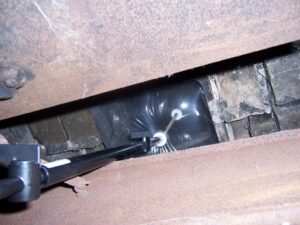
22-5 Chimney Balloon in Flue Tile
You can use a Chimney Balloon to plug a low flue like this. You would need to get a measurement of the length and width of the flue tile first (image 22-3), so you will know what size Chimney Balloon to use. Flue tiles generally take a 12×12 or 15×15. Also purchase a HEK handle extender to give the handle some extra length to reach the flue tile (image 22-5). The Chimney Balloon will require a top-off of air each 6 to 12 months, and it is not quite as durable as the other two options above. So consider it a “Plan B” for this application.



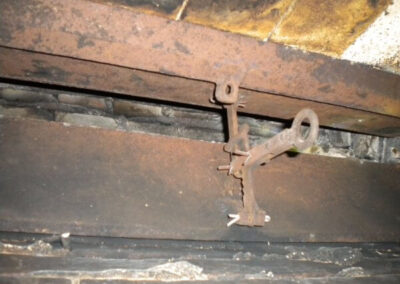
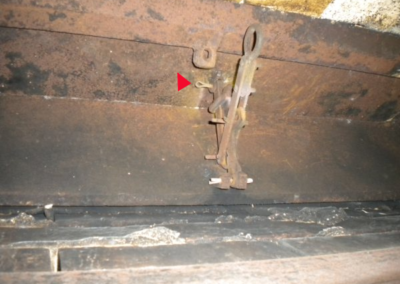
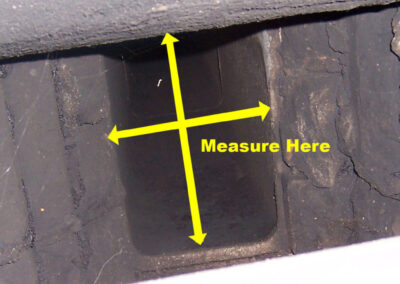
 If you are lucky enough to have a low flue tile like this photo, you can use a
If you are lucky enough to have a low flue tile like this photo, you can use a 
